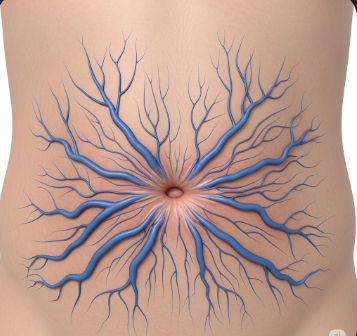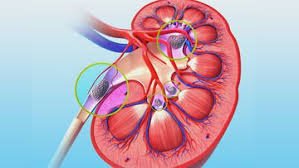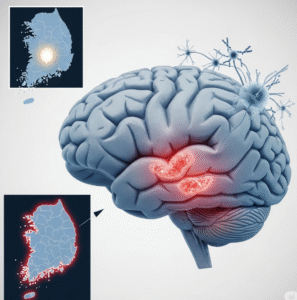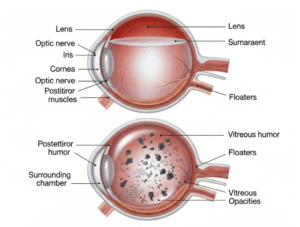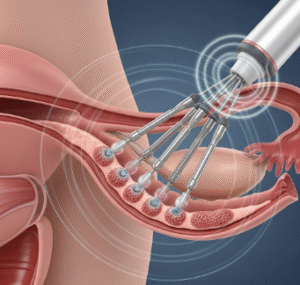Overview
Caput Medusae is a clinical sign characterized by prominent, dilated veins radiating from the navel across the abdomen, resembling the snake-covered head of Medusa from Greek mythology. It is often a manifestation of underlying portal hypertension, commonly due to liver cirrhosis, hepatic vein obstruction, or severe liver disease.
In South Korea, hepatology and gastroenterology centers provide advanced diagnostic tools, imaging, and treatment options for patients presenting with Caput Medusae, focusing on both the underlying liver condition and symptomatic management.
Key Facts
Highlights:
➡️ Caput Medusae is not a disease itself but a sign of increased pressure in the portal venous system.
➡️ Liver cirrhosis is the most common cause in adults.
➡️ It can indicate serious complications, such as gastrointestinal bleeding or liver failure.
➡️ Physical examination often reveals tortuous, engorged veins around the umbilicus, visible even without imaging.
➡️ South Korea offers advanced hepatology care, including imaging, interventional procedures, and liver disease management programs.
What is Caput Medusae?
Caput Medusae refers to the appearance of distended superficial abdominal veins, usually around the umbilical region, caused by portal hypertension.
Key characteristics:
- Veins radiate outward from the navel, creating a network pattern
- Prominent and visible, especially when the patient is standing or straining
- Indicative of impaired blood flow through the liver
- Often associated with other signs of chronic liver disease, such as ascites, jaundice, or splenomegaly
- Severity correlates with the degree of portal hypertension
What Symptoms are Related to Caput Medusae?
Caput Medusae itself is primarily a visual sign, but underlying causes may present with additional symptoms:
- Swollen, distended abdominal veins
- Abdominal distension due to fluid accumulation (ascites)
- Fatigue, weakness, or weight loss in chronic liver disease
- Jaundice (yellowing of skin and eyes)
- Abdominal pain or discomfort
- Gastrointestinal bleeding in severe portal hypertension
- Edema in lower extremities due to fluid retention
Highlights:
➡️ Caput Medusae is a marker of serious liver pathology, not a primary disease.
➡️ Associated symptoms reflect the underlying liver or portal venous disorder.
What Causes / Possible Causes of Caput Medusae?
Highlights:
➡️ Liver Cirrhosis: The most common cause; scar tissue increases portal vein pressure.
➡️ Portal Vein Thrombosis: Obstruction of blood flow leading to vein engorgement.
➡️ Budd-Chiari Syndrome: Hepatic vein obstruction causing portal hypertension.
➡️ Severe Liver Disease: Hepatitis, fatty liver disease, or chronic alcohol abuse.
➡️ Mechanism: Elevated portal vein pressure causes blood to divert through superficial abdominal veins, creating visible engorged vessels.
➡️ Other Risk Factors: Alcohol abuse, viral hepatitis, obesity, or autoimmune liver disease.
When Should I See My Doctor?
Highlights:
➡️ If you notice prominent veins around the navel without prior history, medical evaluation is necessary.
➡️ If accompanied by jaundice, abdominal swelling, or gastrointestinal bleeding, urgent consultation is needed.
➡️ Routine follow-up for patients with known liver disease to monitor for progression or complications.
➡️ Early medical assessment allows for treatment of portal hypertension and prevention of life-threatening complications.
Care and Treatment
Management focuses on addressing the underlying cause and reducing portal hypertension:
Highlights:
➡️ Medical Therapy:
- Diuretics for fluid retention
- Beta-blockers to reduce portal vein pressure
- Management of underlying liver disease (antivirals for hepatitis, alcohol cessation, dietary modification)
➡️ Interventional Procedures:
- Transjugular intrahepatic portosystemic shunt (TIPS) to divert blood flow and reduce pressure
- Paracentesis for severe ascites
➡️ Lifestyle Measures:
- Alcohol avoidance
- Low-sodium diet to reduce fluid accumulation
- Regular monitoring and weight tracking
➡️ Monitoring:
- Ultrasound or CT imaging to assess liver condition and portal vein flow
- Routine lab tests to monitor liver function
➡️ Patient Education: Understanding signs of complications, importance of follow-up, and adherence to therapy.
Treatment Options in Korea
South Korea provides advanced hepatology care for Caput Medusae and portal hypertension:
Highlights:
➡️ Hepatology Clinics: Comprehensive liver evaluation, imaging, and ongoing management.
➡️ Interventional Radiology: Procedures like TIPS and ascites drainage performed by specialists.
➡️ Liver Surgery Centers: For selected cases requiring surgical intervention.
➡️ Multidisciplinary Approach: Collaboration among hepatologists, gastroenterologists, radiologists, and surgeons.
➡️ Advanced Imaging: High-resolution ultrasound, CT, and MRI for portal hypertension assessment.
➡️ Preventive Care Programs: Screening for varices, monitoring liver function, and lifestyle counseling.
➡️ Medical Tourism Support: Multilingual consultations, diagnosis, treatment, and follow-up care for international patients.

